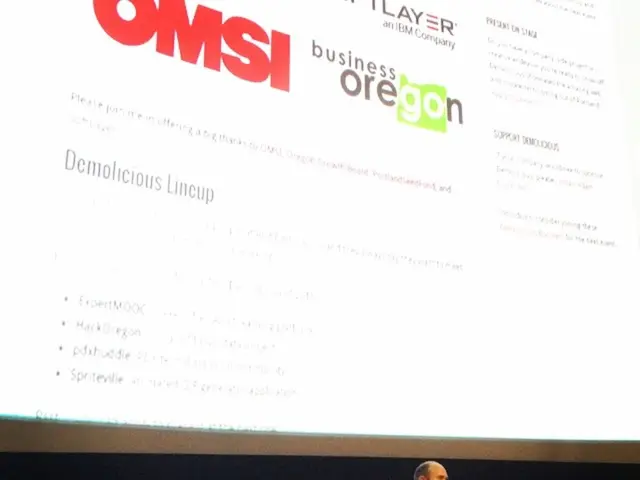Guiding Script Development for Movies: A Detailed Guide
Turning Your Screenplay Dreams into a Reality: Master the Art of Writing a Killer Film Treatment
Ready to see your cinematic masterpiece on the big screen? It all starts with a crucial step: creating a captivating film treatment. Here's a blueprint to guide you along the path to screenwriting success.
- Craft a Stellar Film Treatment That Hooks Producers
- Discover Proven Strategies for Structuring and Selling Your Story
- Identify the Vital Elements Every Film Treatment Must Incorporate
- What Is a Film Treatment?
- Why Your Film Treatment Is Essential in Scriptwriting
- How Long Should Your Film Treatment Be?
- Key Elements Your Film Treatment Must Contain
- The Art of Structuring Your Film Treatment
- Tips and Techniques for Writing an Irresistible Film Treatment
- Successful Film Treatments: Real-World Examples
- Leveraging Feedback to Improve Your Film Treatment
- The Final Frame: Wrapping Up Your Incredible Film Treatment
What in the World Is a Film Treatment?
In the exciting world of screenwriting, understanding the concept of a film treatment can prove game-changing. Imagine your script's blueprint—a detailed roadmap outlining the story's journey, from start to finish. A film treatment isn't just a summarized version; it's where key scenes, main characters, and pivotal moments come alive. It acts as a sales tool, giving movie studios a clear glimpse of your vision before you even pen a single word of the script.
A strong treatment typically covers the film's overall narrative arc and significant turning points. Instead of focusing on specific dialogue, there's more emphasis on general story flow. By hammering out these basic outlines, you test and validate your ideas before expanding into a full script. It's a vital component of any budding screenwriter's toolkit, especially when courting gatekeepers in the film industry.
Why on Earth Do I Need a Film Treatment in Scriptwriting?
A solid film treatment is indispensable for any serious screenwriter with dreams of making a mark in the film world. It's all about impressing industry insiders by crystalizing your story in a concise format. A film treatment provides producers and studios with an unparalleled insight into your unique vision, presents the film's structure and emotional journey, and solidifies the crucial story elements that will bring your concept to life. This document also keepseveryone involved in the project on the same page, ensuring unity of vision, attracting A-list talent, and securing financing.
Having a well-crafted treatment will allow you to make faster script revisions and streamline the writing process. Alongside pitching to Hollywood's power players, a treatment is about ensuring you have a consistent, compelling story ready to take center stage.
A killing film treatment is your partner in crime when turning creative ideas into visual storytelling magic.
How Long Should My Film Treatment Be?
Determining the perfect length for your film treatment can feel akin to tightrope walking. Generally, treatments range between 5-10 pages. The story's complexity and genre can influence the size of your treatment; simpler narratives benefit from brevity, while complex plotlines may require extra space to unfold. The goal is to engage your audience swiftly and effectively while avoiding information overload.
Different producers or movie studios might have different requirements, meaning you must be flexible—adapting your treatment length to match their specific preferences. Crafting multiple versions, including a concise one-pager for initial meetings, can be useful.
Striking this balance ensures your treatment not only piques interest but also delivers necessary details to create a compelling visual story.
The Essential Elements That Must Make an Appearance in Your Film Treatment
Creating a knockout film treatment demands nailing crucial components that ensure your story resonates with readers.
- Eye-Catching Title: A title that encapsulates the central theme or hook of your story serves as the first impression of your film.
- Punchy Logline: A concise, gripping statement that vividly captures your film's essence.
- In-Depth Plot Summary: A coherent overview of the film, highlighting key events and their connections.
- Depth and Analysis of Main Characters: Accurate character descriptions, showcasing their decisions and how they drive the story.
- Rich Setting Descriptions: Immersive, detailed depictions of the world you've created, placing your readers smack dab in the middle of your movie.
Your treatment should provide a thorough, well-rounded view of your story, enabling producers to envision the final cinematic product.
Structuring Your Film Treatment Like a Pro
Structuring your film treatment with finesse and purpose is vital to making it engaging and clear. Start with an alluring introduction that captivates the reader and sets the tone. Move into a three-act structure-a time-tested format that smoothly guides readers through the narrative.
In Act One, introduce key characters, establish the setting, and ignite the central conflict. This part is about making readers feel drawn to the unfolding story. In Act Two, generate rising tension, obstacles, and plot twists inspired by the initial conflict, driving your narrative forward. Showcase character developments and transformations in this section, demonstrating their responses to adversity.
Act Three delivers resolution, wrapping up the narrative elements in a satisfying manner. Keep your reader invested with thematic statements woven throughout the treatment, reinforcing your story's underlying message. Your closing scene should create a lasting impact on the reader, long after they've finished reading.
By organizing your treatment in this manner, you ensure it reads with the flow and allure of a real screenplay, leaving producers eager for more.
Tips and Techniques for Crafting a Winning Film Treatment
- Use Vivid Language: Paint eccentric scenes with words that spark the imagination. Active voice and vibrant descriptions bring life to your narrative, making it jump off the page.
- Maintain Pacing: Balance detail with zip, ensuring that each element advances the story.
- Collaborate: Seek feedback from trusted peers, mentors, and industry contacts to refine and enhance the clarity and appeal of your treatment.
- Generate Suspense: Begin with unresolved mysteries or suspenseful situations that hold the reader's attention, drawing them in from the beginning.
- Choose Accurate Words: Select meticulously chosen words that convey the essence of your story and evoke emotion from your readers.
Your treatment will dazzle and captivate by employing these techniques, providing an irresistible snapshot of your film's full potential.
Successful Film Treatments: Outstanding Real-World Examples
Winning film treatments often demonstrate the power of a clever hook and solid storytelling structure. "Star Wars" innovatively transformed a sprawling saga into a compelling narrative of adventure and hope. The treatment vividly captured a dynamic universe and a hero's journey, sparking interest among producers. Ripe with rich settings, intricate character arcs, and a unique storyline, the treatment convincingly showcased the film's potential for success.
"Pulp Fiction" demonstrated another brilliant approach, emphasizing its nonlinear storytelling and thrilling character arcs. The treatment enticingly conveyed the film's distinctive narrative style and dark humor, laying the foundation for its eventual screen success.
"Silence of the Lambs" used psychological suspense and gritty, emotional depth to engage the reader from the get-go. The treatment expertly depicted the essence of the story's cat-and-mouse game between hero and villain, offering producers an unparalleled view of the film's potential.
Using Feedback to Improve Your Film Treatment
Feedback is a treasure trove in the screenwriting process. Constructive input from peers, mentors, and industry influencers reveals areas of your treatment that may require improvement, such as character depth or plot clarity. Identify patterns in the feedback and use that insight to improve your treatment. Resist the urge to rush through this process, seeing it instead as a chance to refine your story before it gets into the hands of producers.
Maintaining flexibility in your creative process signals to gatekeepers that you are open to collaboration, making you more appealing in a competitive industry. Trust your gut, but stay open-minded.
The Grand Finale: Wrap Up Your Incredible Film Treatment
Mastering the art of crafting a compelling film treatment can transform your screenwriting process. By carefully considering each part, from structure to individual elements, you ensure that your treatment triumphantly sells both your story and your unique vision to the industry. Put these strategies and techniques into practice, and confidently stride toward bringing your cinematic fantasies to life.
Click to share on X (Opens in new window)X
Click to share on Facebook (Opens in new window)Facebook
Like this:
Related
The Creative Saga: What Are Film Treatments and How Can They Propel Your Screenplay?In "Plot and Structure"
The Incredible Power Within: Harness the Energy of Your Film Treatment to Boost Your Screenplay GameIn "Plot and Structure"
Get Ready to Soar: Unleash Your Film Treatment's Potential and Upgrade Your ScreenplayIn "Plot and Structure"
What Is a Film Treatment?: A Unique Blueprint for Your Screenwriting JourneyIn "Plot and Structure"
The Foundation of Your Screenwriting Empire: Writing a Winning Film TreatmentIn "Plot and Structure"
How to Create a Film Treatment Your Screenplay Will Thank You ForIn "Plot and Structure"
- A strong film treatment, like a fashion-and-beauty magazine cover, showcases a film's essence in an irresistible format, attracting industry gatekeepers and bridging the gap between a screenwriter's imagination and the realm of cinema.
- Building upon the structured skeleton of a film treatment is comparable to arranging a book's plot, characters, and themes into engaging and cohesive chapters, ensuring a captivating reading experience for producers.








